Stunning Companion Plants For Purple Fountain Grass
Purple fountain grass is a beautiful ornamental grass that can add a touch of elegance to any garden. It's tall, airy plumes sway in the breeze, and its deep purple color is a striking contrast to other plants. But purple fountain grass can be even more stunning when it's planted with complementary companion plants.
Here are a few of our favorite companion plants for purple fountain grass:
- Coneflowers: Coneflowers come in a variety of colors, so you can find one that perfectly complements the purple of your fountain grass. They also have similar growing requirements, so they're a good choice for a low-maintenance garden.
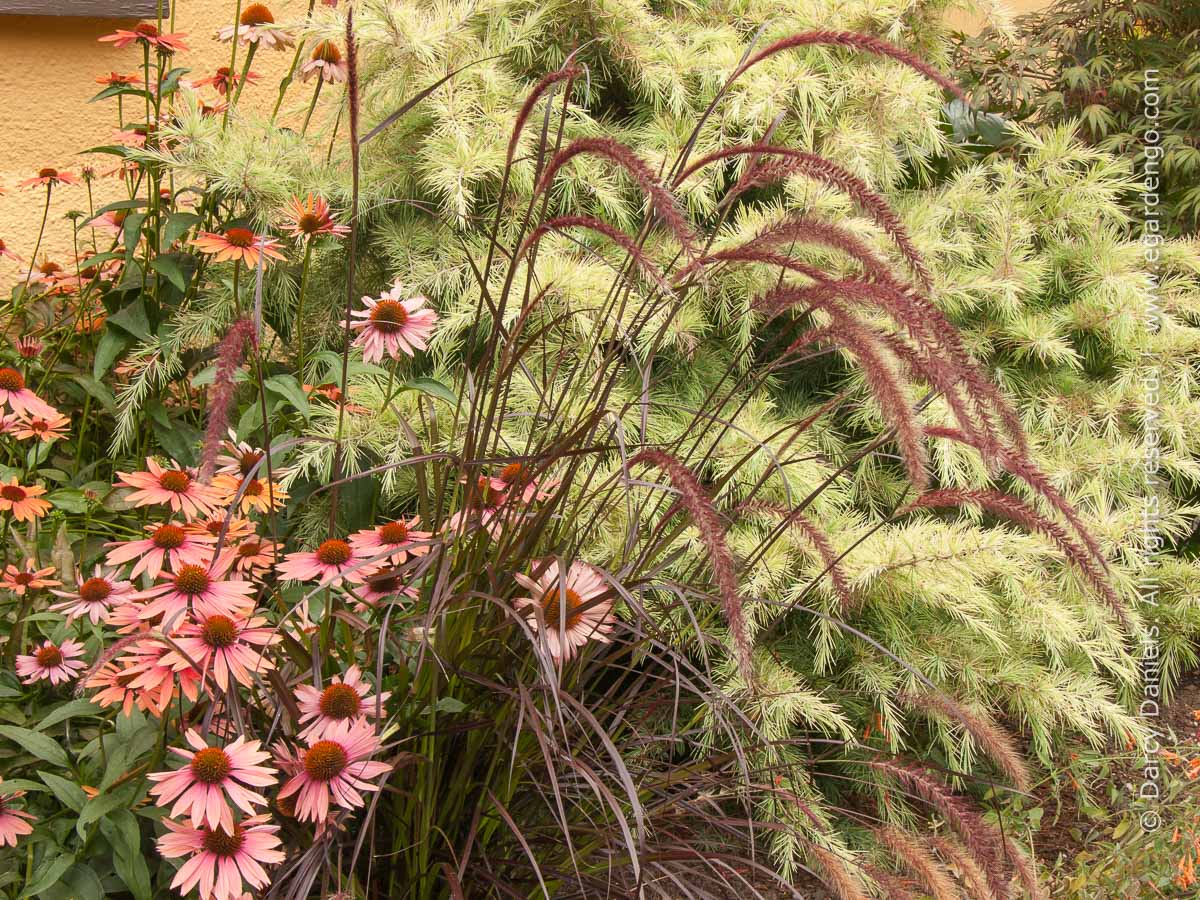
- Salvias: Salvias are another great choice for companion plants for purple fountain grass. They come in a wide range of colors, including purple, blue, and white. They also attract butterflies and other pollinators, which can add to the beauty of your garden.
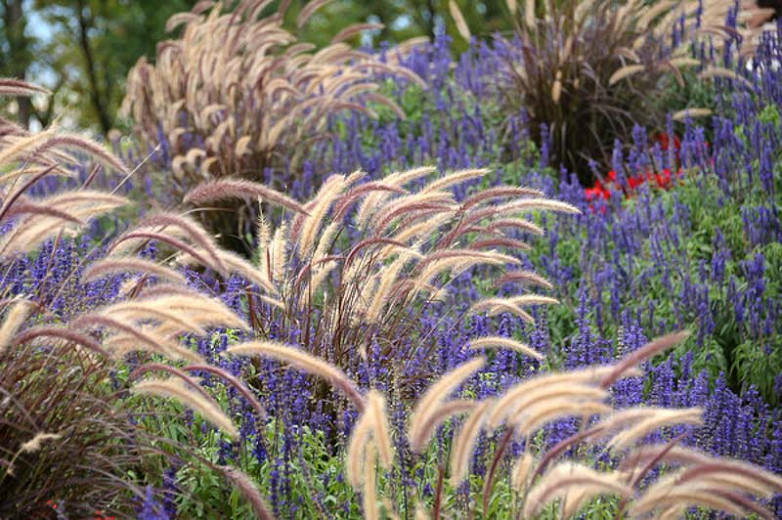
- Echinacea: Echinacea is a hardy perennial that's native to North America. It has bright orange or yellow flowers that bloom in the summer. Echinacea is known for its medicinal properties, and it can also be used to attract butterflies and other pollinators.

- Butterfly bushes: Butterfly bushes are tall, flowering shrubs that attract butterflies and other pollinators. They come in a variety of colors, including purple, pink, and white. Butterfly bushes prefer full sun and well-drained soil.
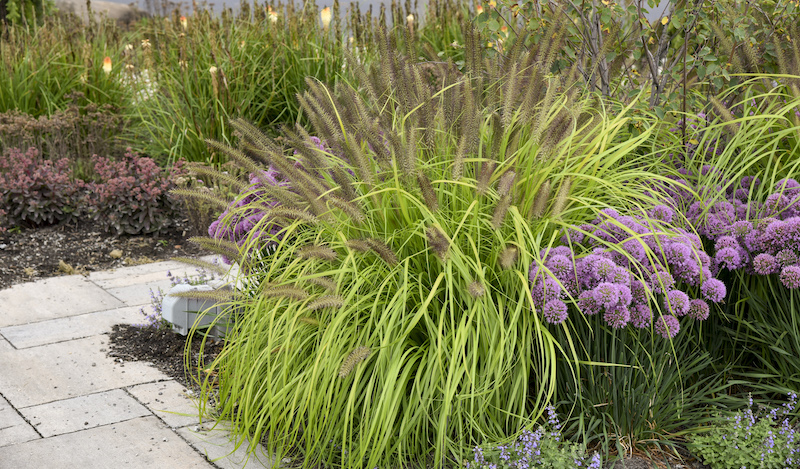
- Zinnias: Zinnias are annual flowers that come in a wide range of colors, including purple, red, yellow, and orange. They're easy to grow and care for, and they add a splash of color to any garden.

- Asters: Asters are another type of annual flower that comes in a variety of colors, including purple, pink, and white. They bloom in the fall, so they can help extend the color in your garden.
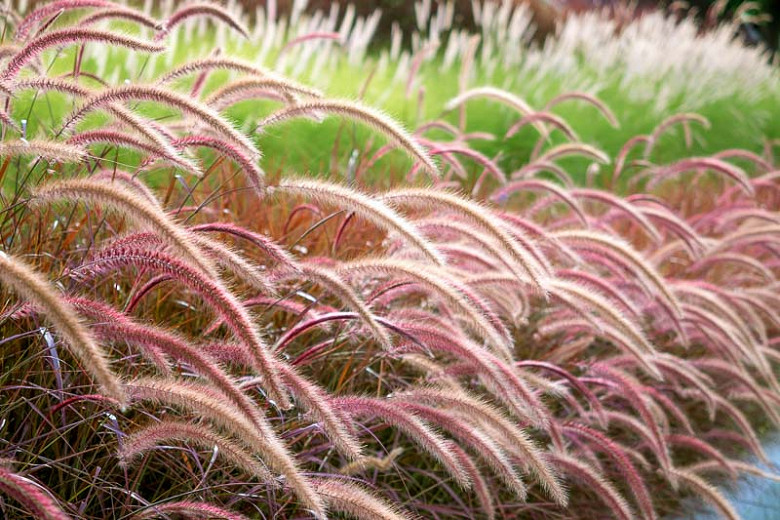
- Russian sage: Russian sage is a tall, airy perennial that has blue or purple flowers. It prefers full sun and well-drained soil. Russian sage can grow up to 4 feet tall, so it's a good choice for a background plant.
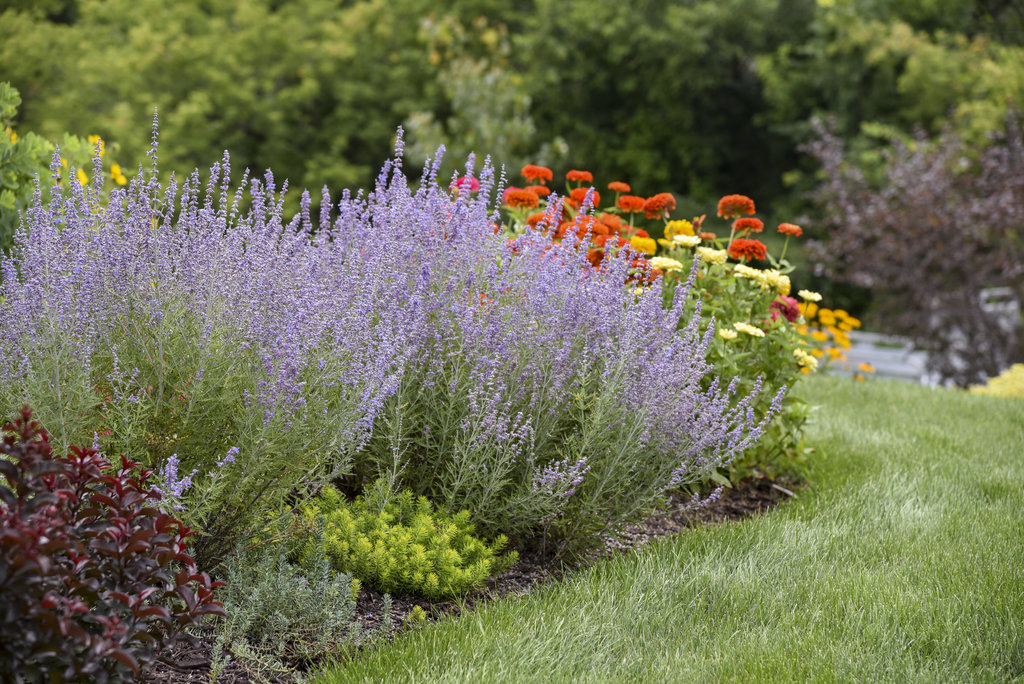
- Miscanthus: Miscanthus is a type of ornamental grass that comes in a variety of colors, including purple, red, and yellow. It prefers full sun and moist soil. Miscanthus can grow up to 6 feet tall, so it's a good choice for a background plant.
When choosing companion plants for purple fountain grass, it's important to consider the plant's height, color, and growing requirements. You also want to make sure that the plants will complement each other's appearance. With a little planning, you can create a stunning combination of plants that will add beauty and interest to your garden for years to come.
Purple fountain grass is a beautiful ornamental grass that can add a touch of elegance to any garden. It grows in full sun and prefers well-drained soil. Purple fountain grass can grow up to 6 feet tall, so it's important to choose companion plants that will not be overshadowed. Some good companions for purple fountain grass include:
- Cleome: This annual plant has colorful blooms that bloom from summer to fall. It's a good choice for adding height and color to your garden. Garden Wiki
- Mexican sunflower: This annual plant is drought-tolerant and loves full sun. It has bright yellow blooms that attract butterflies and bees.
- Blue oat grass: This grass has blue-green foliage that complements the purple fountain grass. It's a good choice for adding texture and interest to your garden.
- Verbena bonariensis: This tall, upright plant has lavender-blue flowers that bloom from summer to fall. It's a good choice for adding height and color to the back of your garden.
For more information about purple fountain grass companion plants, please visit Garden Wiki.
FAQ of purple fountain grass companion plants
Q: What are some good companion plants for purple fountain grass?
A: Purple fountain grass is a versatile plant that can be paired with a variety of other plants. Some good companion plants include:
- Yucca: Yucca is a drought-tolerant plant that can add height and structure to a garden. It also has similar growing requirements to purple fountain grass.

- Echinacea: Echinacea is a native North American plant that is known for its daisy-like flowers. It blooms in the summer and fall, and can add a splash of color to a garden.
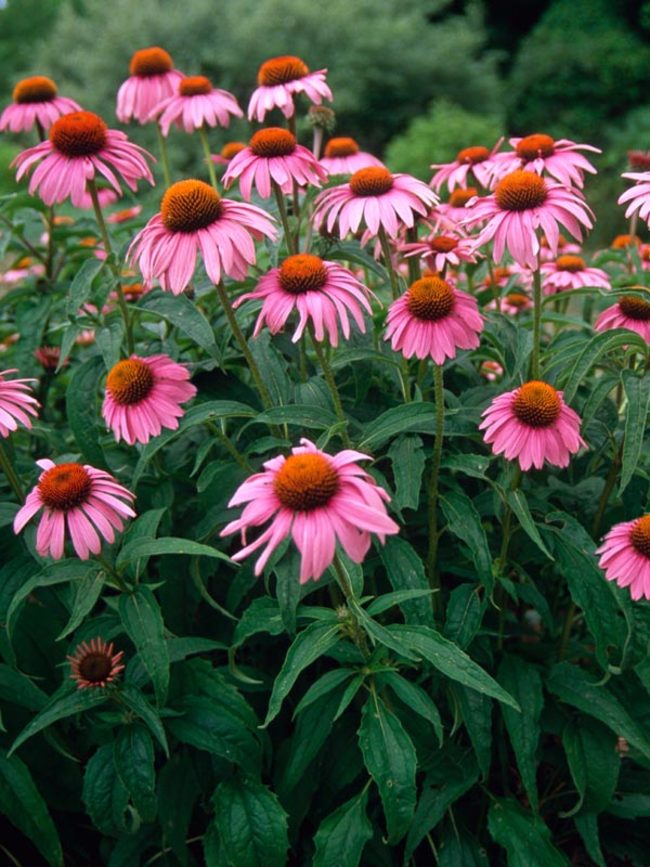
- Salvia: Salvia is a genus of flowering plants that includes many colorful varieties. It blooms in the summer and fall, and can attract butterflies and hummingbirds to the garden.
- Rudbeckia: Rudbeckia is a genus of flowering plants that includes many varieties with bright yellow or orange flowers. It blooms in the summer and fall, and can add a pop of color to a garden.
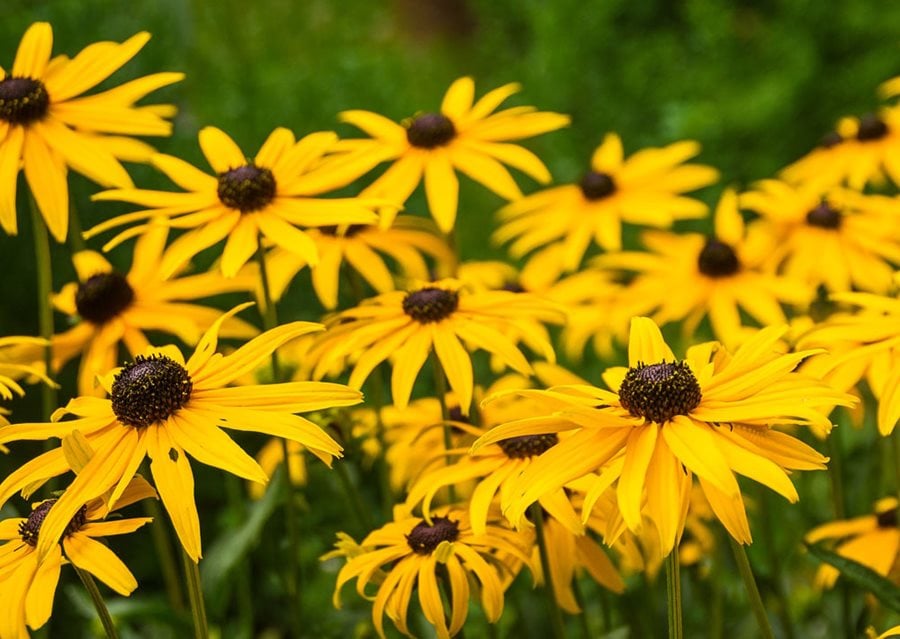
- Coneflower: Coneflower is a genus of flowering plants that includes many varieties with daisy-like flowers. It blooms in the summer and fall, and can add a touch of elegance to a garden.
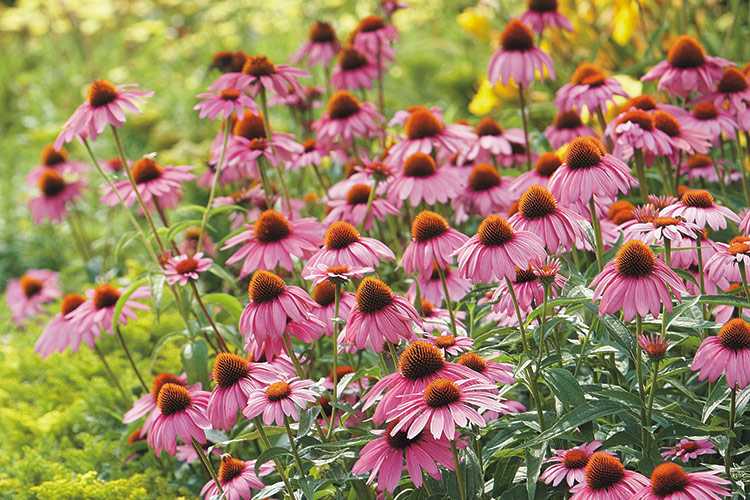
Q: What are the growing requirements of purple fountain grass?
A: Purple fountain grass is a relatively easy-care plant that prefers full sun and well-drained soil. It is drought-tolerant once established, but should be watered regularly during the first year of growth. Purple fountain grass is hardy in USDA zones 7-10.
Q: How do I plant purple fountain grass?
A: Purple fountain grass can be planted in the spring or fall. To plant, dig a hole that is twice the width of the root ball and slightly deeper. Backfill the hole with soil, tamping it down gently. Water the plant well and mulch around the base to help retain moisture.
Q: How do I care for purple fountain grass?
A: Purple fountain grass is relatively low-maintenance. In the spring, divide the plant to keep it healthy and vigorous. Water the plant regularly during the first year of growth, and then less often as it becomes established. Purple fountain grass does not require fertilizer, but you can fertilize it lightly in the spring if desired.
Q: How do I overwinter purple fountain grass?
A: If you live in a cold climate, purple fountain grass may need to be overwintered indoors. To do this, dig up the plant in the fall and replant it in a pot. Bring the pot indoors and place it in a sunny location. Water the plant regularly and keep the soil moist. In the spring, you can replant the plant outdoors.
Image of purple fountain grass companion plants
Here are 5 different images of "purple fountain grass companion plants" from Pinterest:
- Cleome: This annual plant has bright, colorful flowers that bloom in the summer and fall. It can be grown in full sun or partial shade and prefers well-drained soil.
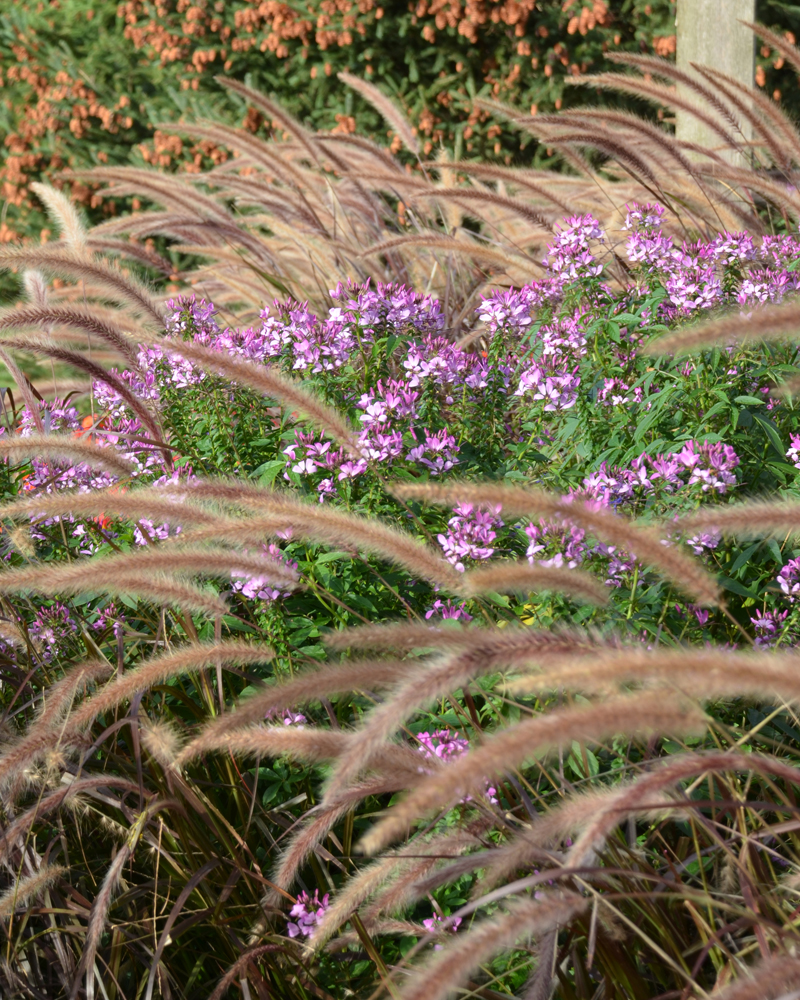
- Black-eyed Susan: This perennial plant has daisy-like flowers that bloom in the summer. It is drought-tolerant and prefers full sun.
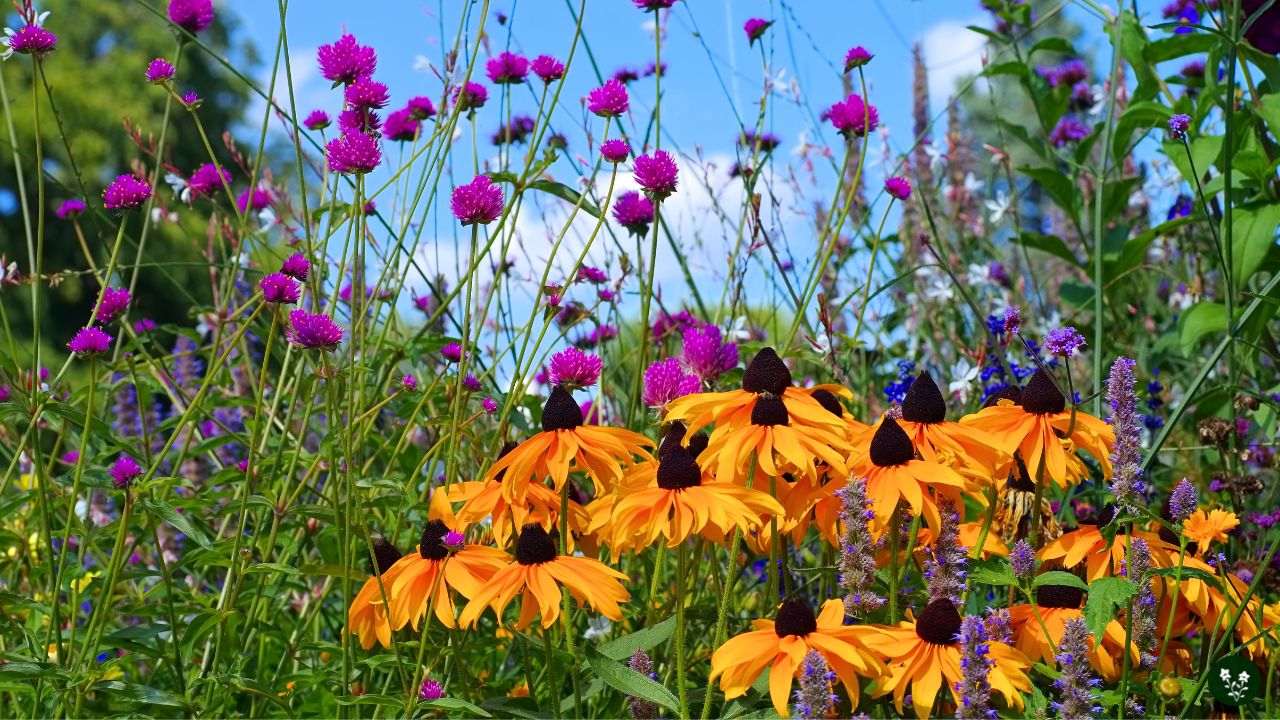
- Yarrow: This perennial plant has clusters of small, white flowers that bloom in the summer. It is drought-tolerant and prefers full sun.

- Verbena: This annual or perennial plant has clusters of small, colorful flowers that bloom in the summer and fall. It can be grown in full sun or partial shade and prefers well-drained soil.
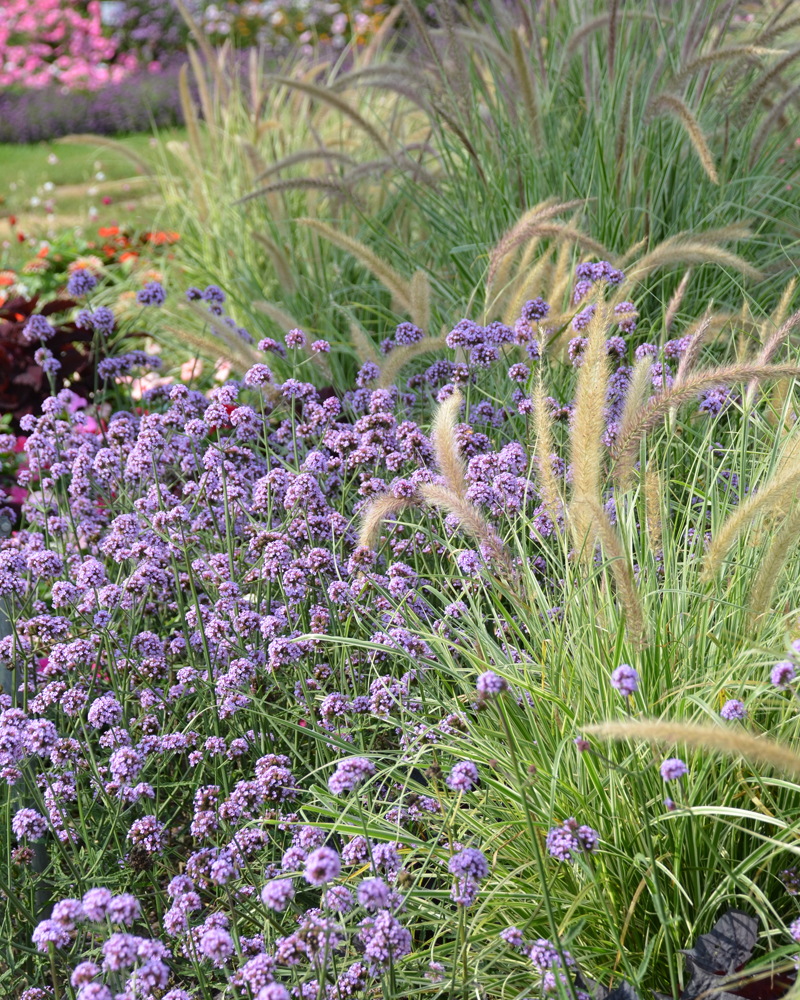
- Salvia: This perennial plant has spikes of colorful flowers that bloom in the summer. It prefers full sun and well-drained soil.

Post a Comment for " Stunning Companion Plants For Purple Fountain Grass"